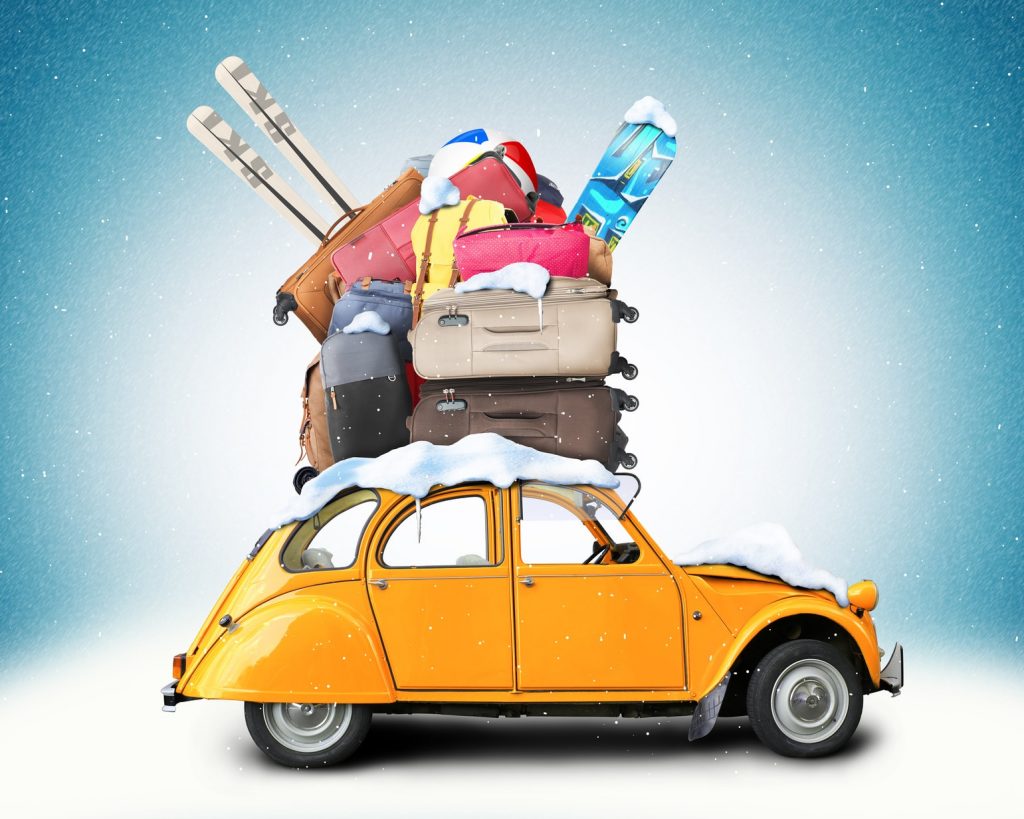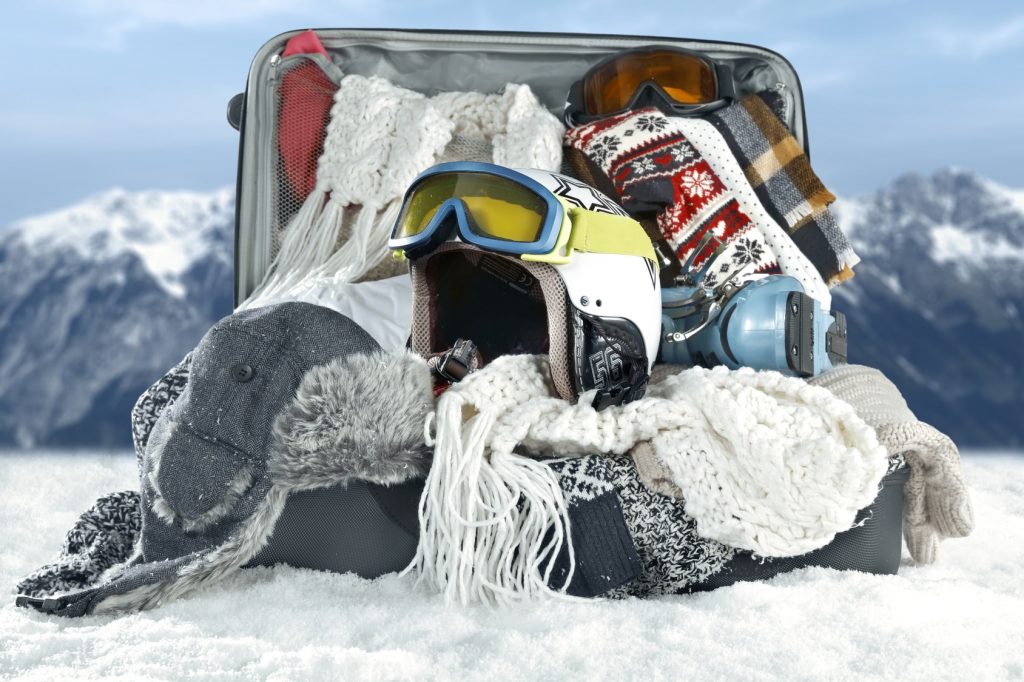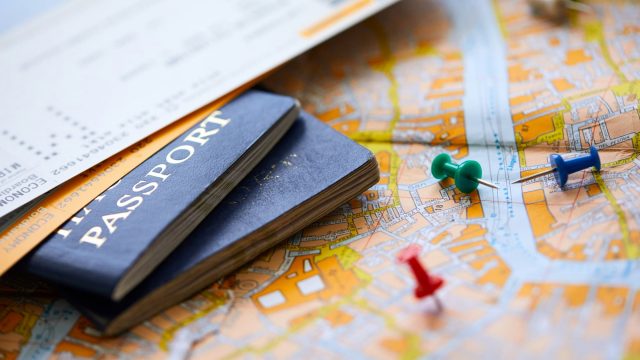Many people love a winter holiday. You can escape a lot of the beach-seeking summer crowds and experience activities and sights you don’t see throughout the rest of the year. From snowy mountain peaks to Christmas markets, a winter getaway has a lot to offer. If you’re looking to take a snow filled break this year, be sure to read our guide below and prepare as much as possible.
 Photo by: Zarya Maxim/Fotolia
Photo by: Zarya Maxim/Fotolia
Travel insurance
Travelling in winter season leads to a higher number of flight cancellations as weather conditions worsen. Check that your travel insurance will reimburse you of any losses should your flight be delayed or cancelled. Ensure that the area you’re travelling to is covered by the insurance.
If taking part in some winter-based activities such as snowboarding or skiing, check if your insurance will cover any costs incurred as a result of injury. You may find that some activities are covered, such as dog sledding or cross country skiing. Activities considered more dangerous such as snowmobiling and downhill skiing may require additional cover. Each policy will vary so check before buying what is covered and what isn’t. Make sure any activity you’re doing will be covered.
Packing
Consider the area you’re travelling to and the average temperatures for that time of year. Pack accordingly if temperatures will always be around freezing.
You may think your suitcase needs to be full of jumpers, waterproof shoes and hats. Plan to dress in layers to make the most of the available space in your suitcase.
Your first layer should be a thermal top with bottoms or an all-in-one. This should be made from a thin, sweat-absorbent material if possible. On top of this, wear another thin long- or short- sleeved top. Then a fleece-type jumper and a thicker wind-resistant waterproof coat. Consider taking a coat that is a size too big to allow for the layers underneath.
You should only need one pair of shoes. Wear these to the airport and throughout your winter holiday to save on space. They should be comfortable, non-slip, waterproof walking boots. Remember that you’ll need to remove these at airport security so avoid laces if possible. If the weather requires it, consider snow boots. Invest in strong, warm walking/hiking socks and layer these if necessary. Ski socks are an alternative.
Top tip: If you think you’ll need a helping hand walking on snowy or icy ground, try Yaxtrax. Simply pop them on your shoes for extra grip when tackling slippery ground.
Take a hat of thin insulating material. Ensure that it covers as much of your ears and neck as possible. A scarf and gloves of similar material could be considered. You may wish to take along a pair of earmuffs.
Winter sun can catch a lot of people out. Take sunscreen of at least 30SPF and apply every couple of hours if spending time in the sun. You may also need to moisturise your skin daily and drink plenty of water to stay hydrated. Take and apply chapstick to protect against chilly winds. A pair of sunglasses may also come in handy.
Consider purchasing waterproof casing for your phone or camera if you expect to be taking a lot of photos.
 Photo by: magdal3na/Fotolia
Photo by: magdal3na/Fotolia
Car hire
Check our previous article to see if you should expect to face a Winterisation Fee for the inclusion of winter tyres or snow chains upon collection of the vehicle. If you want your booking to include either of these, make sure you request them upon booking. You can call our Reservations Team (0333 336 1554) to discuss this.
There are additional items you may consider taking in your car when driving in wintery conditions.
• An in-car mobile phone charger to ensure your phone is kept fully charged should you need it.
• Torch and spare batteries if an emergency situation occurs in the dark.
• Ice scraper to keep the windscreen free of ice and snow.
• Blanket(s) in case of a breakdown to keep warm.
• First aid kit.
• Maps in case of SatNav failure.
Check when you collect the car that all water reserves and the oil tank is sufficiently topped up and again before departing on long journeys. If in doubt, contact us.
Fill up with fuel before heading off. In some mountainous areas there may be very few opportunities to re-fuel.
Always carry our number and that of the supplier so we can be contacted in an emergency. Be aware of the emergency services numbers for the location you’re visiting.
Read over our road trip blog for further tips on taking a long driving journey.
Attractions and activities
If planning to visit certain attractions, check whether they are open during the winter season. Many may close if high visitor numbers are not expected. Opening hours may also be reduced so check before you visit to avoid a wasted trip.
Expect delays to your journey if weather conditions are bad. Be prepared to face traffic jams, accidents or even road closures. Ensure you know where you’re going and take along a map or SatNav if you need to seek an alternative route.
Be prepared for shorter daylight hours so plan accordingly. You may not be able to venture out as much as you could in the summer.
Plan for your winter holiday
Consider all the elements above when planning your next winter holiday and it’ll run more seamlessly. Whether you’re looking to explore a new area without the crush of summer crowds or looking to take part in winter sports, there’s a lot of benefits to a winter holiday.
Do you regularly take holidays over winter? Where’s your favourite go-to location? Let us know in the comments.
Make sure you follow us on Twitter and Facebook for the latest travel tips and news. Remember to sign up to our newsletter below for the latest deals.
Subscribe to our newsletter
Want our blogs emailed direct to you? Sign up below to get updates featuring our blogs and car hire top tips. Receive the best deals on car hire straight to your inbox.
Written by Jessica Juby.





